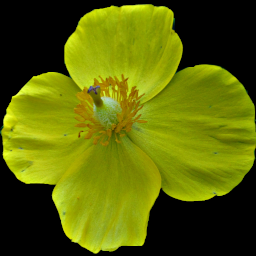In our continuing quest to bring you flowers blooming in the wrong colors (see our purple Queen Anne’s Lace, white Deptford Pink, lavender Bugles, and white New England Aster) we bring you a rare white burdock—rare in general, but rather common in the Pittsburgh neighborhood of Beechview. Normally the florets of Burdock are in the pink to purple range; this white form was growing out of a hedge in Beechview, where it was blooming in the middle of July.
To Italians this common weed is known as cardone, or cardoon if you like a more Anglicized term, a valuable free vegetable whose stalks many Italian families gather in great quantities. The European Cardoon is a different plant, but it seems that the Burdock makes a good substitute. In Japan, the root is eaten as gobo. The next time you see a vacant lot filled with burdock, remember that you are seeing nothing less than a smorgasbord of free appetizers.
Gray describes the genus and the species:
ARCTIUM L. BURDOCK. Heads many-flowered; flowers all tubular, perfect, similar. Involucre globular; the imbricated bracts coriaceous and appressed at base, attenuate to long stiff points with hooked tips. Receptacle bristly. Achenes oblong, flattened, wrinkled transversely; pappus short, of numerous rough bristles, separate and deciduous. — Coarse biennial weeds, with large unarmed petioled roundish or ovate mostly cordate leaves floccose-tomentose beneath, and small solitary or clustered heads; flowers purple, rarely white. (Name probably from arktos, a bear, from the rough involucre.)
A. minus Bernh. (COMMON B.) Heads racemose or subracemose, 1.5-3 tm. broad; involucre glabrous or arachnoid; bracts shorter, more slender and more arcuate than in the preceding. (A. Lappa, var. Gray.) — Roadsides and waste places, too common throughout our range except on the northeastern borders where largely replaced by the preceding [A. lappa]. — Including A. Lappa, var. tomentosum Gray, a form differing only in its more or less arachnoid involucre, and apparently less marked or characteristic than the European A. tomentosum Mill. (Nat. from Eu.)
–
In Wild Flowers Every Child Should Know (1914), Frederic William Stack gives us a number of other common names for the plant, and a good bit of its popular lore:
BURDOCK. COCKLE BUR. BEGGAR’S BUTTON. CUCKOO BUTTON
Arctium minus. Thistle Family.
Children delight to gather the shaggy green burs of the Beggar’s Button and form them into birds’ nests, baskets, dolls, and a various assortment of similar playthings. They well know, too, the bitter taste they leave on the fingers. The Burdock is a large, coarse, bushy, branching biennial, growing from two to four feet high. The large, rough stalk is very leafy, and is round and grooved. The toothless, hollow-stemmed leaves are large, broad, and alternating. They are pointed-oval in shape, more or less wavy, and rather thin and veiny. The lower ones are heart-shaped. The small flower head is composed of numerous silky, tubular florets of varying shades of purple, gathered into soft tufts and set in a rather large, conical green bur, which is thickly covered with many sharp, spreading, long-hooked, and sticky bristles. They are set on short stems in irregular terminal, bunchy clusters. The root and fresh leaves are employed as a remedy in blood and skin disorders, and also for swellings and rheumatism. In Japan the root is known as Gobo, and is a popular vegetable in the country. Burdock is a familiar plant commonly found around neglected buildings, and along fence rows, roadways, and in pastures patches along streams and in swamps, and flowering from May to July. The flower stem resembles the leaves, but is larger, and from one side, near the middle, it sends out a thick, fleshy, tapering spike, which is densely crowded with minute, greenish yellow florets. This spike is tender and edible when about half developed. The root which has a strong, aromatic fragrance, is used by country people when dried or candied, as a remedy for dyspepsia, and as a stimulant and tonic for feeble digestion. Calamus appears to have been known to the ancient Babylonians, and also by the Greeks. It is used in India to some extent, and the powdered root is an esteemed insecticide in Ceylon and India. It also produces a volatile oil that is largely used in perfumery. Calamus can always be identified by the fragrance emitted by the roots, and for edible purposes similar roots should be avoided. The interior of the stalk is sweet. It ranges from Nova Scotia to Ontario and Minnesota, south to Kansas and the Gulf of Mexico. Also in Europe and Asia. This species grows from two to six feet high.






